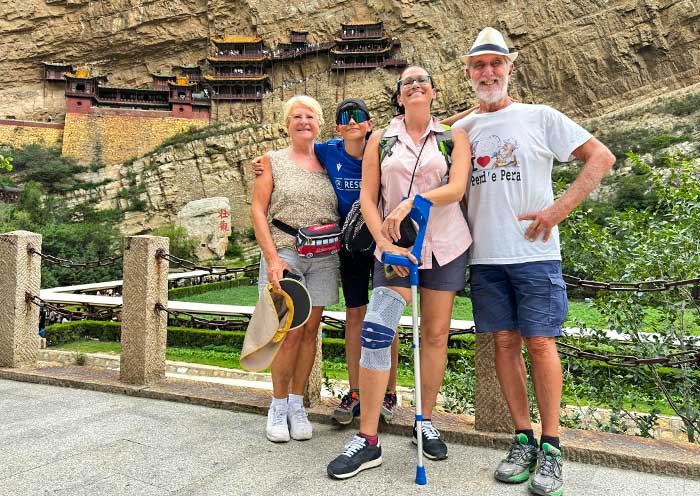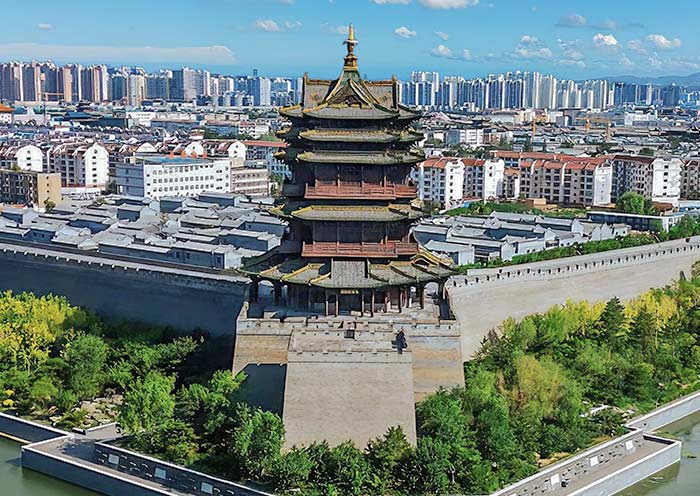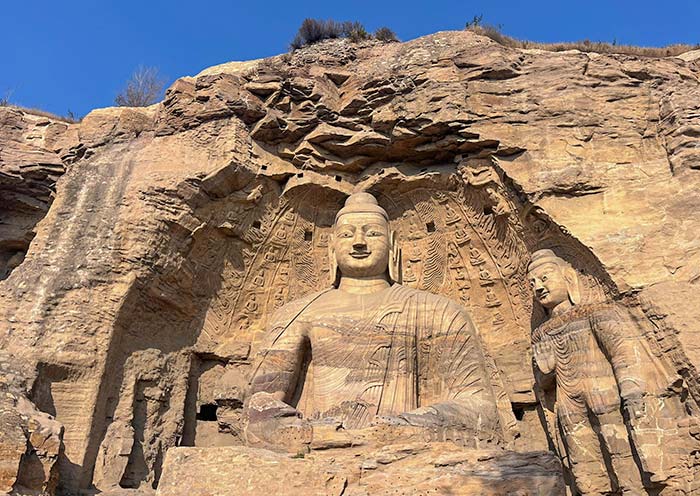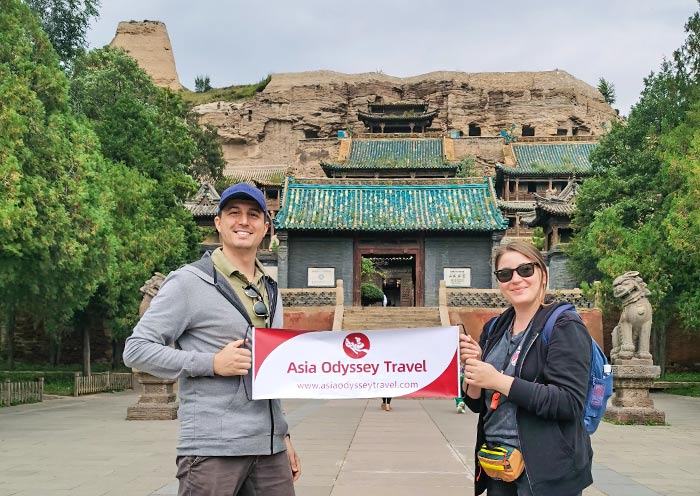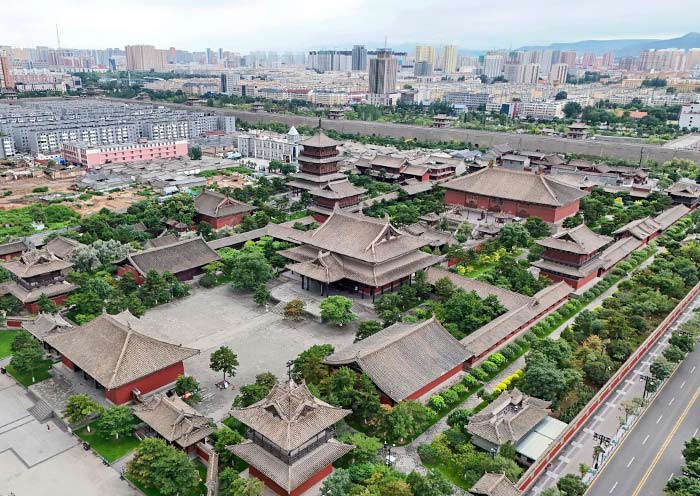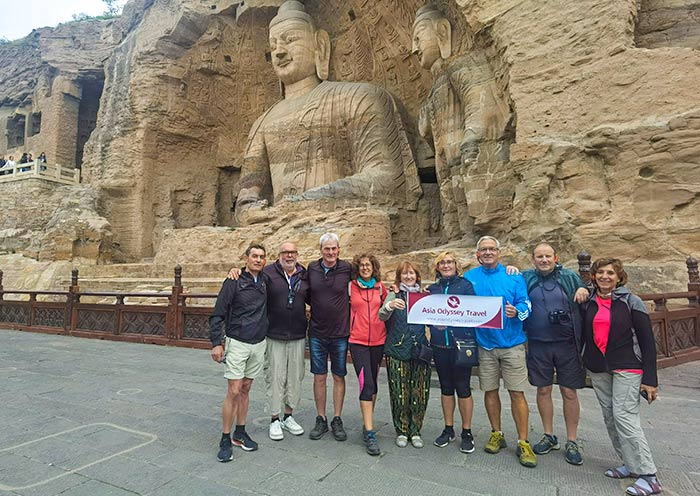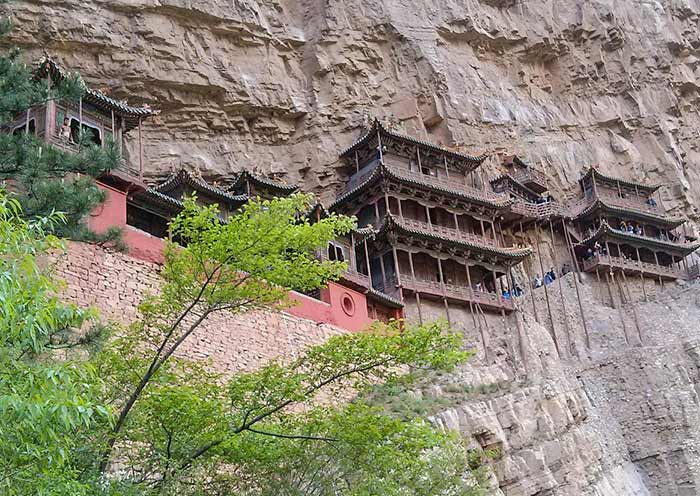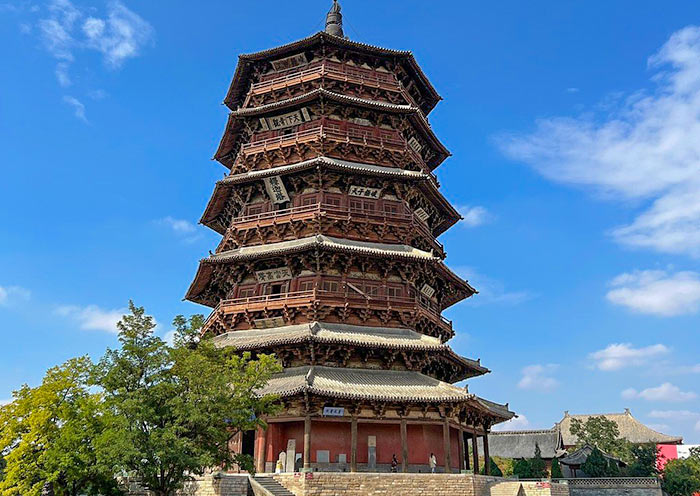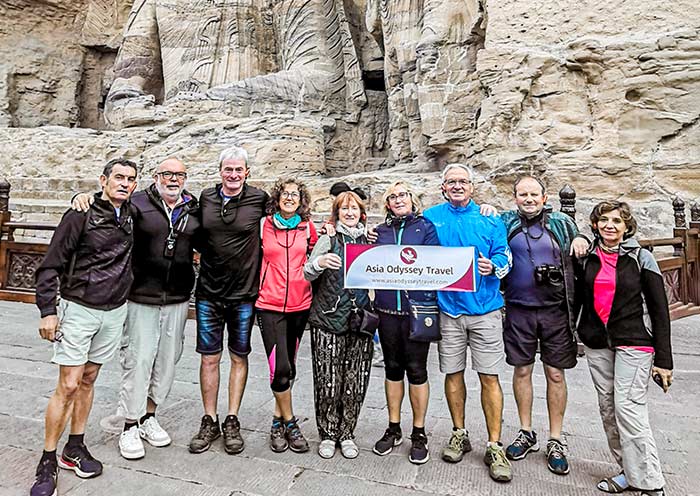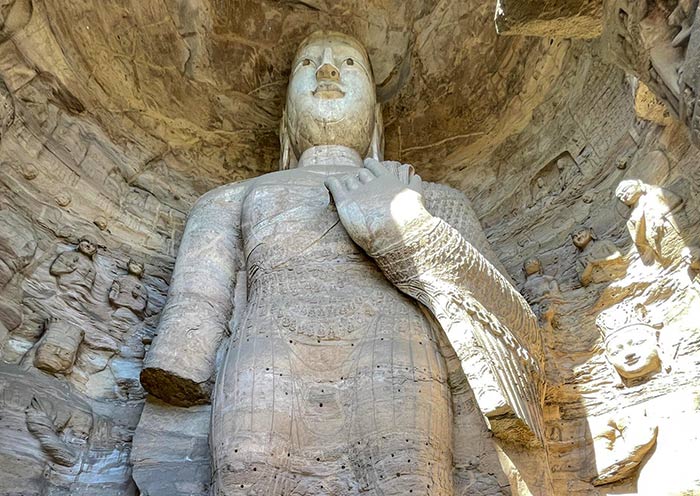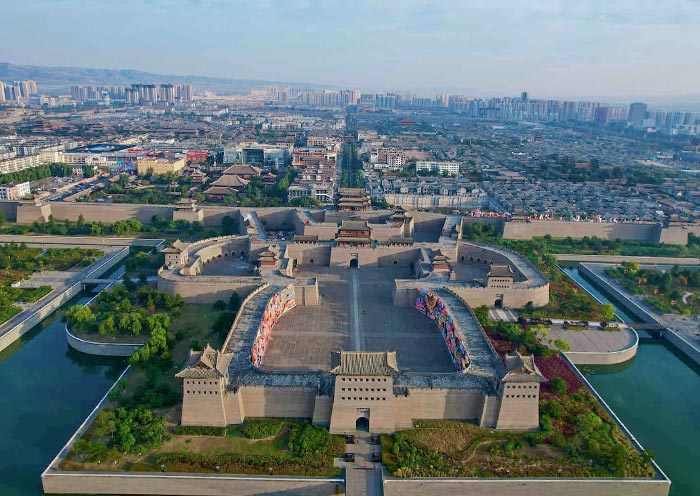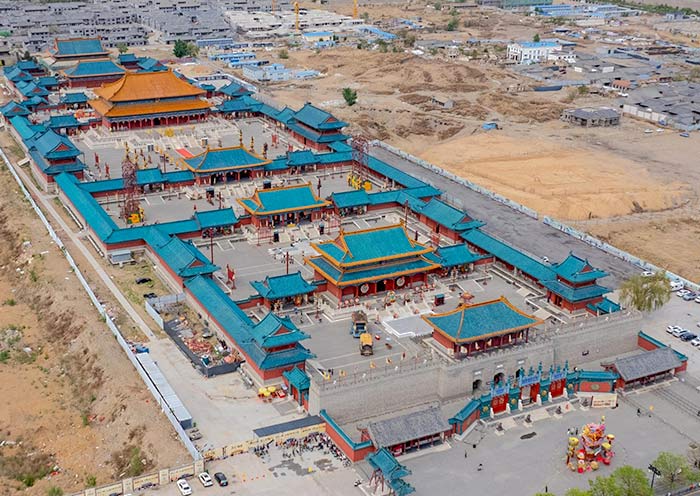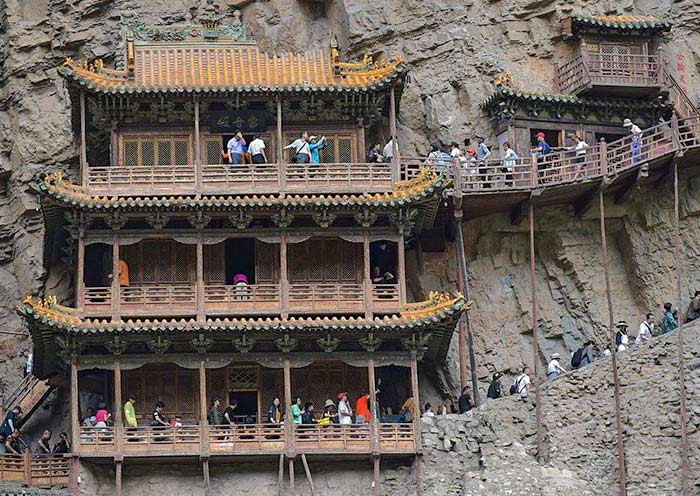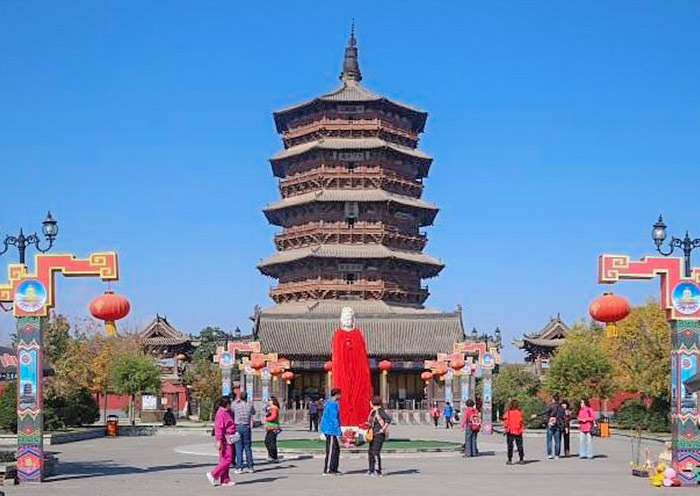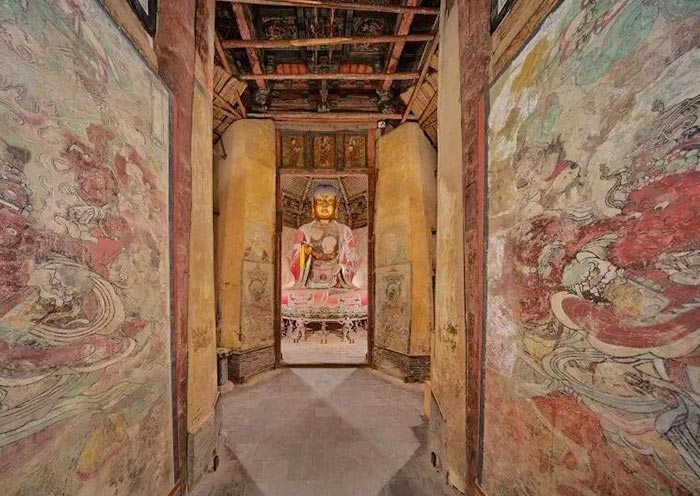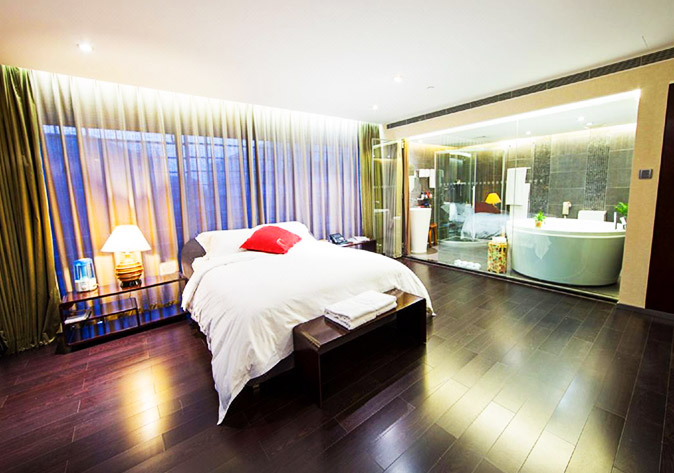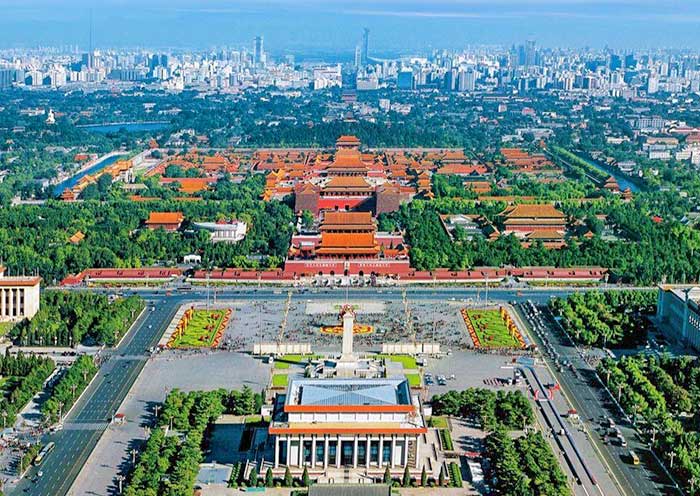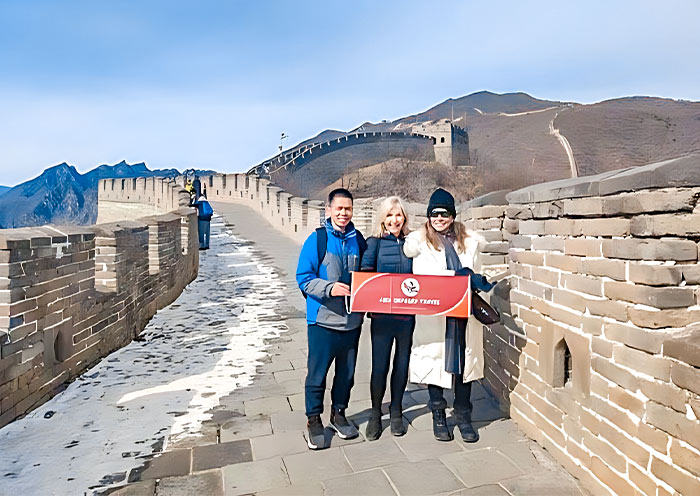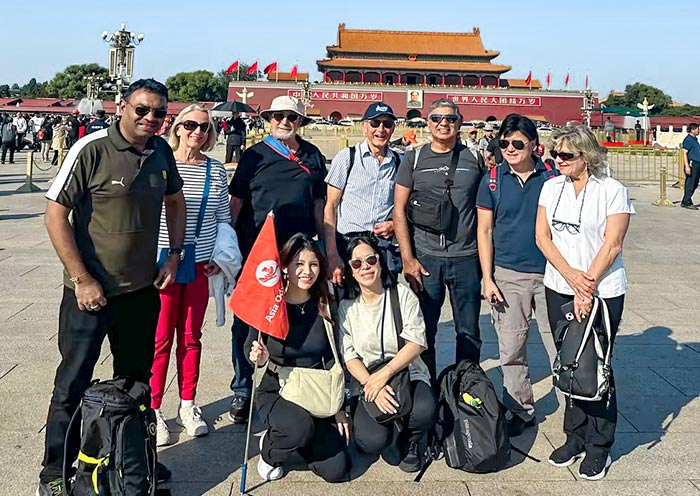Today, you will visit two must-see places in Shanxi. One is the Hanging Temple at Mount Heng in Hunyuan County, and the other is the Wooden Pagoda at Fogong Temple in Yingxian County. Finish your trip at Datong Railway Station. Safe Journey back to Beijing by high-speed Train.
In the early morning, head to Hanging Temple (悬空寺) which is about 80 km (2 hour’s drive) away from Datong. The Hanging Temple of Mount Hengshan, built during the late Northern Wei Dynasty (491 AD), is a royal construction erected by Taoist followers and has a history of over 1,500 years. It was once renowned alongside the Yungang Grottoes and is now acclaimed as one of the world's ten most dangerous buildings. As the "First Marvel" among the Eighteen Wonders of Mount Hengshan, the Hanging Temple has always been a must-visit landmark in Shanxi. The renowned Tang Dynasty poet Li Bai (李白) left the word "Magnificent壮观" here, while the Ming Dynasty explorer Xu Xiake (徐霞客) left the inked masterpiece "a wonder of the world天下奇观." Originally named "Xuankong Ge玄空阁," the Hanging Temple is a unique temple in China that integrates Buddhism, Taoism, and Confucianism. "Xuan玄" is derived from Taoist principles, while "Kong空" originates from Buddhist teachings. The name "Hanging悬" was derived because the entire temple complex appears to hang on the cliff, with "Hanging" and "Xuan" being homophones in Chinese.
Approaching the Hanging Temple, the earliest and best-preserved wooden-structured cliffside ancient building in China, you can marvel at its "Perilous奇险" nature. The main architectural complex is supported by 30 prominent wooden pillars (work during earthquakes) and hidden horizontal wooden beams embedded in the rock face (bearing the weight), with the highest point, the Hall of the Three Religions (三教殿), standing about 90 meters above the ground, creating a millennium-old architectural marvel on the cliff. Stepping into the Hanging Temple, you can appreciate its "Compactness小巧." With a layout of "One Temple, Two Towers," covering an area of about 921 square meters, a total length of about 32 meters, and comprising 40 pavilions and halls, it houses over 80 bronze, iron, clay, and stone-carved Buddha statues. The aerial walkway connecting the north and south towers is the essence of the "Hanging悬" aspect of the Hanging Temple, with the existing structure being restored during the Ming and Qing dynasties. Climbing up involves slow queues on the narrow walkway, with wooden planks above and stone slabs below. The lotus patterns on the wooden stairs symbolize "ascending to auspiciousness" which is a unique feature of this temple. Standing at the Hanging Temple, you will marvel at the "Ingenious精妙" choice of location. The temple is built into the crevices of the precipice, shielded by massive cliffs above and stone walls on the sides, avoiding rainwater, sunlight (3 hours per day), and wind erosion on the temple buildings.
In the Hanging Temple, you can not only appreciate the beauty of Chinese ancient architecture through murals, colored sculptures, and carvings but also discover a world where three religions harmoniously coexist (Great Harmony/Datong). In the Pure Yang Palace (纯阳殿), you can witness the Taoist deity Lü Dongbin (吕洞宾); in the Hall of Thunderous Sounds (雷音殿), you can see the enshrined Buddhist Gautama Buddha (释迦牟尼); and in the Hall of Three Religions (三教殿), you will find offerings to Laozi, Buddha, and Confucius simultaneously. After visiting the Hanging Temple, you will undoubtedly be awed by the millennial wonder that integrates mechanics, aesthetics, art, religion, architecture, culture, and the wisdom of ancient people.
Travel Tips:
1.Due to the narrowness of the walkway at the Hanging Temple and the relatively steep stairs, not friendly to those who fear heights, elderly persons, and infants.
2.Due to the narrow walkway at the Hanging Temple, leading to potentially long waiting times during peak hours.
3.The Hanging Temple only receives sunlight for about 3 hours per day. For photography enthusiasts, it is recommended to visit in the morning for better lighting conditions.
Then, head to Yingxian Wooden Pagoda which is 55km (1 hour’s drive) away. Yingxian Pagoda, originally named the Sakyamuni Pagoda of Fogong Temple, was built in 1056 and is one of only eight surviving Liao Dynasty wooden structures in China. Standing at a height of 67.13 meters, equivalent to a modern 20-story building, it has been certified by the Guinness World Records as the "World's Tallest Wooden Pagoda." Ancient craftsmen constructed the wooden pagoda without using a single iron nail, relying entirely on the interlocking of thousands of wooden components (similar to Lego). Throughout a millennium, it has withstood more than 40 earthquakes and endured over 200 cannonball strikes during wartime, yet it remains standing tall, a true marvel. Additionally, the pagoda houses two relics of the Sakyamuni Buddha's tooth, making the Yingxian Wooden Pagoda an exemplary ancient architectural wonder and a center and sacred site of Buddhist culture.
The Yingxian Wooden Pagoda, the Leaning Tower of Pisa, and the Eiffel Tower are known as the "Three Great Pagodas of the World." Standing before the Yingxian Wooden Pagoda, you may notice a slight tilt in the structure. This tilt was caused in the 1930s when local gentry dismantled internal braces and mud walls to improve the appearance and lighting, resulting in the lean. In 1933, Liang Sicheng measured the pagoda and proposed a restoration plan upon discovering the tilt. The pagoda continues to lean at a rate of 2 millimeters per year. Currently, for the safety of visitors and the ancient structure, climbing the pagoda is prohibited, and visitors can only admire it from the outside and visit the ground floor.
When visiting the Yingxian Wooden Pagoda, be sure to appreciate its bracket sets. The pagoda features 54 types of brackets in 240 sets, making it the pagoda with the most diverse use of brackets in ancient Chinese architecture, earning it the title of the "Bracket Museum斗拱博物馆." You cannot miss the more than 50 inscribed plaques hanging on the pagoda—treasures of calligraphy. Among them, the plaque on the third level, "Sakyamuni Pagoda释迦塔," is the oldest (from the Jin Dynasty in 1195), while the fourth level's "Wonder of the World天下奇观" was inscribed by the Ming Emperor Zhu Houzhao in 1508, and the top level's "Ingenious Workmanship峻极神工" was inscribed by the Ming Emperor Zhu Di in 1406.
Interestingly, although the pagoda appears to have five levels from afar, it contains nine levels inside. Stepping into the first level of the pagoda, you can gaze up at the 11-meter-tall colored statue of Sakyamuni Buddha and witness the "nested tube structure" inside the pagoda. This structure consists of an outer cylinder formed by 24 external columns and an inner cylinder formed by 8 internal columns, connected by brackets and beams to create an incredibly robust architectural system. The inner layer houses Buddha statues, while the outer layer serves as a corridor, showcasing the unique style of Liao Dynasty architecture. This "nested tube structure" is commonly used in modern high-rise buildings. As the setting sun casts its glow on the pagoda, thousands of swallows return to nest within it, continuing to narrate the story of the pagoda through the ages. The Yingxian Wooden Pagoda has been patiently awaiting your visit.
At last, it is time to end your 2 Days Datong Tour from Beijing. Thank you for choosing Asia Odyssey Travel (AOT) for your China Datong Tour, and we are always here working for you and hope to see you again for your next trip to Asia. Safe journey!
Extension Ideas:
1.If you wish to extend your trip and explore other highlighted parts of Shanxi, such as Pingyao, Mount Wutaishan, Taiyuan, Hukou Water Fall, and more, we can help you with the arrangements.
2.If you plan to continue your exploration to other cities in China, such as Beijing, Luoyang, Xian, Chengdu, Chongqing and Shanghai, please feel free to let us know. We can customize your itinerary and assist you with travel arrangements.
